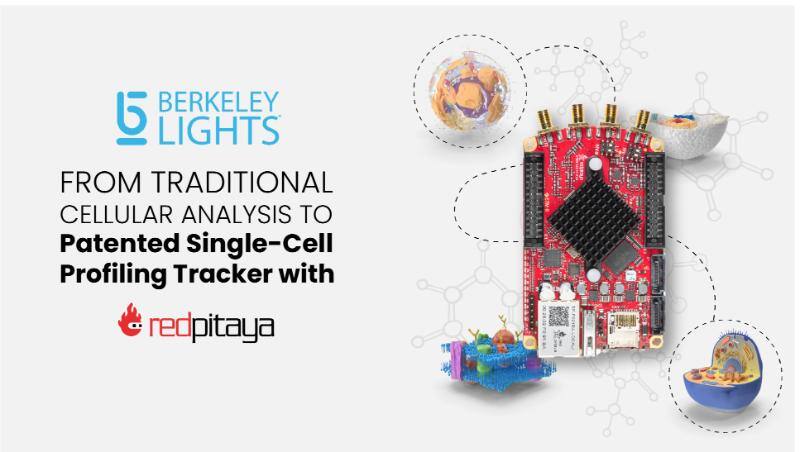Cellular Analysis with a Helping Hand from Red Pitaya
-
Posted by
 Red Pitaya Team
, June 27, 2024
Red Pitaya Team
, June 27, 2024


 One of the lessons of the COVID-19 pandemic is how vitally important fast and reliable biotech equipment can be for cellular analysis and the development of vaccines and other medicines. Bruker Cellular Analysis – previously known as Berkeley Lights – has developed the Beacon® Optofluidic System, a patented profiling tracker for single cells or clones. And Red Pitaya is more than happy to announce that a STEMlab board is hidden somewhere deep inside this system, doing what it’s best at: generating equally fast and reliable input and output signals for data acquisition.
One of the lessons of the COVID-19 pandemic is how vitally important fast and reliable biotech equipment can be for cellular analysis and the development of vaccines and other medicines. Bruker Cellular Analysis – previously known as Berkeley Lights – has developed the Beacon® Optofluidic System, a patented profiling tracker for single cells or clones. And Red Pitaya is more than happy to announce that a STEMlab board is hidden somewhere deep inside this system, doing what it’s best at: generating equally fast and reliable input and output signals for data acquisition.
Traditional cellular analysis is done using microplates with multiple wells, with volumes ranging from some tens of nanoliters to milliliters. Obviously, with such volumes pinpointing cells is not possible, which complicates the task of tracking and identifying individual cells. Therefore, Bruker has developed OptoSelect™ chips, capable of moving cells by means of light, with thousands of NanoPen™ chambers replacing the microwells. These chambers make it possible to deposit, culture, and characterize single cells through the proprietary Beacon Platform assay, with chamber sizes two orders of magnitude smaller than microwells, going as low as 0.32 nanoliter (hence the name)!
The system includes an automated process for screening thousands of cells with four workflow modules:
- Import, where software identifies the cells in parallel and directs them to specific NanoPen chambers, making it possible to load all the chambers of an OptoSelect chip in less than 30 minutes.
- Culture: cell count and growth rate are continuously calculated and updated by the chip.
- Assay: individual cells are tested immediately and repeatedly in the chamber, rather than having to be cultured for weeks to reach a minimum number of cells.
- Export: cells of interest can be selected and moved into position by light patterns for export to a well plate.
This workflow generates a detailed profile for each cell or clone, in an analysis cycle between 60 and 200 times faster than with traditional methods, and with equipment that fits on a desk, rather than occupying a complete room. The profile includes more than ten crucial parameters, such as cell diameter, circularity, growth rate, cell count, RNA expression, and so on, allowing the identification of cells that are relevant to specific research goals, such as the previously mentioned development of vaccines.
Due to design patents and other intellectual property matters, we cannot explain the STEMlab’s role in detail, but when you need high-throughput of precision data Red Pitaya always emerges as a logical solution, especially when space is an issue.
About the Red Pitaya Team
The Red Pitaya editorial team consists of engineers, researchers, and product experts who develop and test cutting-edge open-source test & measurement solutions.
Our mission is to make advanced instrumentation accessible to everyone — from students and educators to leading research labs worldwide.



